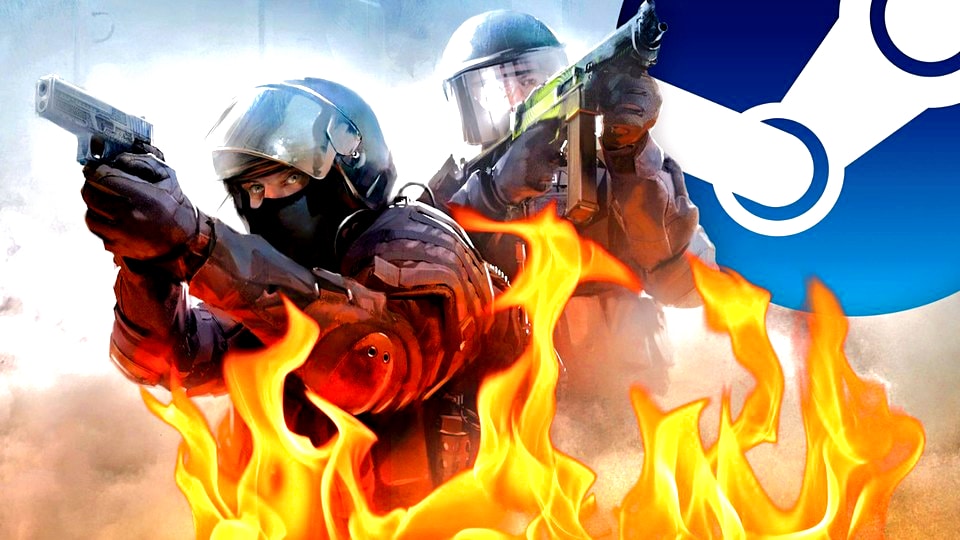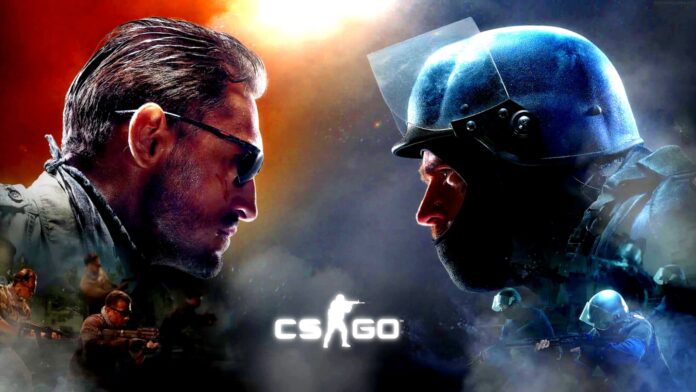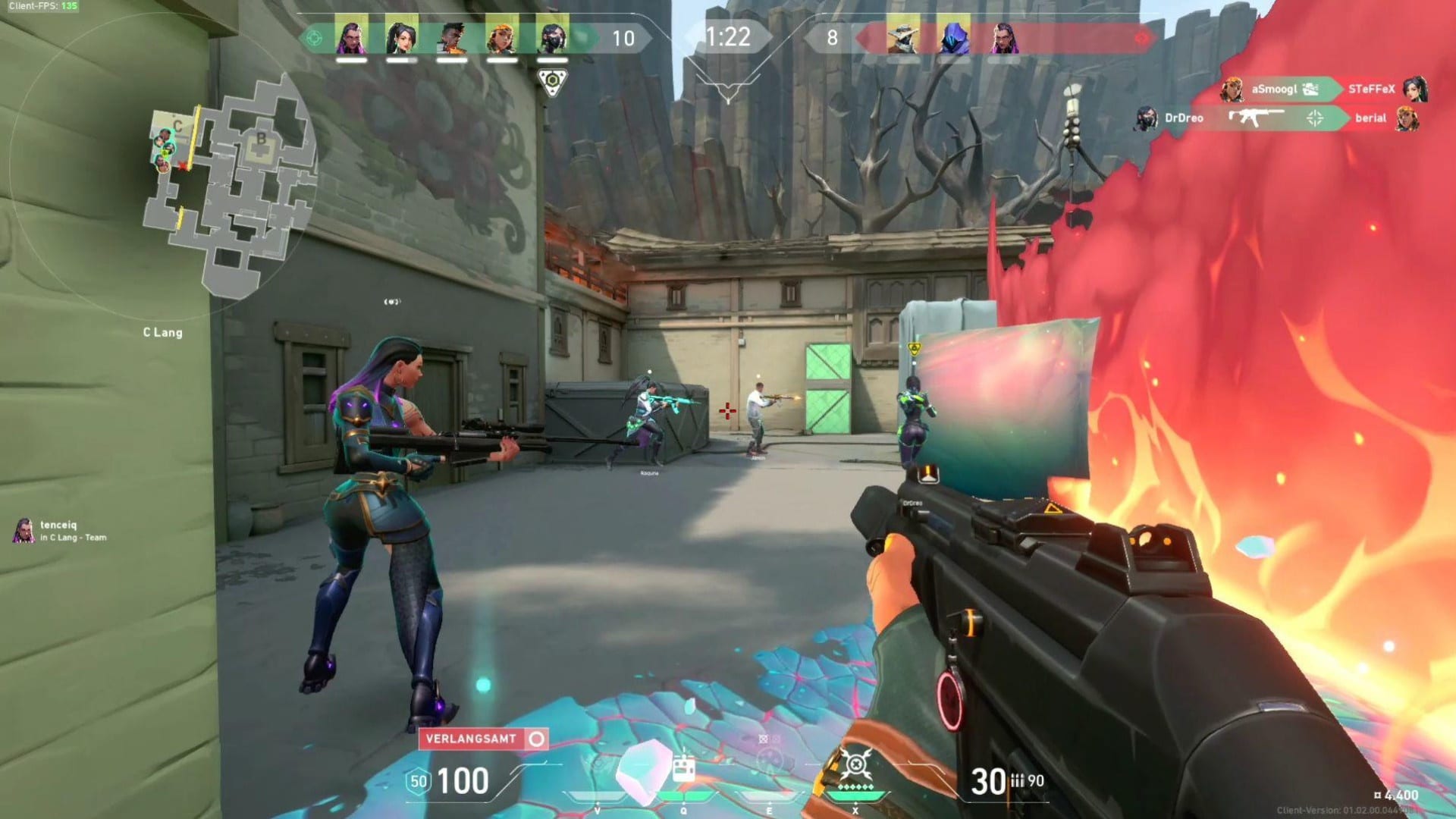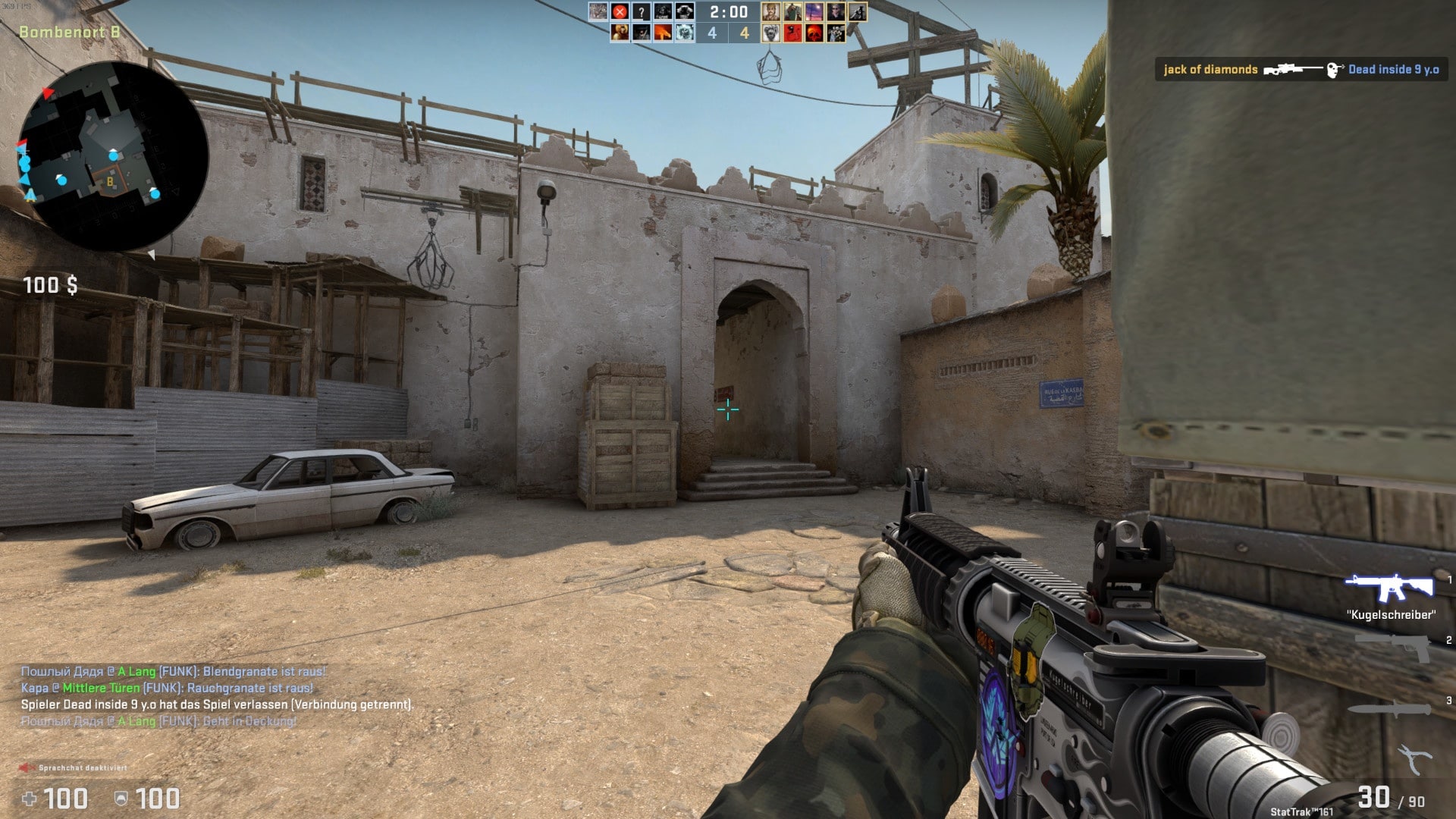CS seemingly outlives every hype, every shooter trend and every competitor, no matter how high-profile. What makes this shooter so special?

Counter-Strike is a phenomenon that has seen countless ups and downs, often producing contradictions. In 2018, for example, the removal of the price tag through Free2Play first caused a short-term loss of players. The announcement of the first very direct competitor Valorant, on the other hand, even helped to usher in the all-time record. How can that be?
Battle Royale or Hero Shooter: nothing seems to take the wind out of this Counter-Strike’s sails – it was once again the most popular Steam game in 2021. In this article, I would like to analyse the reasons for this. And I have to start with an admission.
Table of Contents
Valorant as a CS killer? No way!
When I first played Valorant, I felt real danger to Counter-Strike. Valorant came across as fundamentally similar, but fresher and more modern. I even think it puts CS in its pocket gameplay-wise in places. So I concluded that Valorant could be dangerous for CS. I believed that large parts of the e-sports community could switch to Valorant. And CS’s player numbers would decline, I concluded at the time:
Well, I was wrong and none of this materialised for CS – quite the opposite. Yes, the Valorant announcement caused a stir in March 2020. But it helped Counter-Strike player numbers explode in April 2020!
Who knows, maybe many players wanted to remember how Counter-Strike plays. The then record of 1.3 million simultaneously active players was never reached again.
And the all-time curve generally shows how indestructible CS:GO on Steam is. Sure, there have been ups and downs over the years, but above all there is an astonishing long-term growth. The healthy, huge community lives and breathes constantly. Other live service game developers can only dream of this:
![(Counter-Strike: Global Offensive holds steady as one of the most played titles on Steam. [Image source: Steamcharts.com])](https://www.global-esports.news/wp-content/uploads/2022/04/CounterStrike-Global-Offensive.jpg)
But why is that? Why does Counter-Strike simply not want its community to get bored? And will it possibly go on forever?
Let’s start our analysis where it all began. Because the primeval beginnings, measured in Internet years, form the foundation for a success story without a blueprint.
Counter-Strike was the Fortnite of the ’00s
I can tell you a thing or two about it myself: The beta version of the mod Counter-Strike for Half-Life was the undisputed king at my first LAN parties. CS gave me my first shooter experiences and brought me into contact with e-sports in the first place.
Even though I haven’t actively played Counter-Strike competitively since 2015, I consider it one of my most formative games. It shaped my taste for hardcore and tactical shooters.
And why is the old author rambling so maudlinly from mothballs? Because it’s not just me! Counter-Strike formed a whole generation of shooter fans, even at the turn of the millennium. My steep thesis: Counter-Strike was back then what Fortnite is today.
Why? The community didn’t just meet online, but got to know each other personally in the real world. In the schoolyards, in the break rooms, on LANs. That connects enormously and lays the foundation for a long bond. And if I’m honest: There were few real alternatives. At the turn of the millennium, tactical multiplayer shooters didn’t exactly grow on trees!
So a shooter for old people? A relic of the past? Not at all: CS today is far more than the Ü30 party of multiplayer shooters! Because Valve used its huge influence through Steam to always provide for new blood.
Steam as an engine
Valve has full control to promote CS itself. Whenever a new season starts, millions of users are confronted with the almost unnoticeable hint that Counter-Strike still exists.
By the time of the Free2Play release at the latest, most shooter fans will have at least tried out the classic game. And some have stuck with it. I am convinced: Steam serves Valve as an engine to drive its house brands Counter-Strike and Dota 2 – and to keep player numbers high.
Then there’s the smart integration of Steam’s assets: The market for skins generates interest from gamblers who expect to make a profit. Players can sell their Lootbox content, acquire desired items themselves, and so on. As criticisable as much of this is, it creates a pull that benefits Counter-Strike. Even prices for rare in-game stickers are making headlines:
Also not to be neglected: The connection to the Steam Workshop not only guarantees supplies of skins, weapons, maps, game modes and so on, it also offers modders their own microcosm to implement ideas and become part of a passionate creative workshop. CS is interactive on many levels – it is a game, platform, marketplace and community all in one.
With (HLTV), Valve also operates an integrated spectator platform that shows matches simply and easily, but above all promotes what is probably the strongest pillar of the business construct: e-sports.
A power in e-sports
The Counter-Strike principle is still setting competitive standards with Global Offensive 23 years after the mod’s launch. From official tournaments with big prize money to small private leagues just for fun – Counter-Strike has made the first-person shooter big as an e-sport and remains one of the most important addresses itself.
This is not only due to Valve’s lavish prize money, which has been a major contributor to the electronic sport of Counter-Strike for years. Even if the term “sport” continues to be disputed, no one can deny that there are professional teams that earn the big money (not only in CS:GO):
Counter-Strike is by nature extremely tailored to competitive play. Maximum precision is required. The best reflexes and moves win on a small scale, the best strategies win on a large scale. Tactics and strategy intertwine. These are aspects that characterise professional sports.
However, the release of Valorant in 2020 could have ensured that many professionals would turn to the newer game. And indeed, the total prize money paid out for CS:GO in 2020 shows a severe dip (via Statista.com). But we have to take into account that the then still young Corona pandemic contributed negatively to this. A year later, the situation looks better again: in 2021, CS:GO prize money was back at pre-pandemic levels.
Counter-Strike’s success has so far not been affected in the long term by powerful competitors or force majeure. This is not only due to the consistently competitive gameplay, but also to the passive enthusiasm factor. And this despite the fact that CS:GO players have repeatedly suffered from the cheater problem over the years:
when there is an equal opponent in the game. This not only creates fun when watching, seeing what incredible manoeuvres the pros pull off. It also creates a personal connection – after all, many fans actively play themselves.
And these fans pay for merchandise, event tickets and in-game items. It’s a cosmos of its own that draws spectators in and moves huge amounts of money.
To put it succinctly: if you ask why CS:GO is still successful, you could also ask why football continues to be successful. The obvious answer: because it is profitable for the professionals and because it is timeless in its quality of generating excitement among fans.
Success through a lack of innovation?
We all like to try something new – at least most of us and at least from time to time. Variety is a must! Why always order the same thing when you can have this wicked soul food bowl with red cabbage, pak choi, chicken, nuts and lemon? But sometimes, well, it just has to be the juicy cheeseburger. It’s always good!
What we know, we love. It’s not for nothing that the beer brand Jever ran the same damn commercial for over 12 years The message: Look, newfangled gadgets are all well and good, but our classic is tried and tested. And Counter-Strike hardly changed anything at the core of the game principle over the years, even at the release of the latest part CS:GO. Only the framework has been expanded.
So players will always find in CS what they expect: the same, perhaps somewhat dusty in comparison, but also timelessly fun and challenging gameplay. Never touch a running system, as the saying goes. Valve therefore only changed the trappings in order to keep players interested.
And no end in sight
Counter-Strike “only” got a real live service with CS:GO in 2013. With this, Valve was once again on the pulse of the times, because later competitors like R6: Siege and Valorant would follow a similar path. Operations provide players with new content such as maps, and new modes are added here and there. Players have to grind daily tasks to earn nice stickers and other goodies.
In this way, Valve offers motivation beyond the gameplay incentive. And that is provided anyway by a sophisticated ranking system in which players can advance to performance levels. Valorant is also structured very similarly in this respect.
Since my hypothesis that Counter-Strike could lose many players through Valorant has not proven true, I offer a different conclusion: Valorant must have made the gameplay of Counter-Strike palatable to a larger mass.
What seemed like an attack on CS:GO turned out to be one of the best developments for the age-old shooter principle. Valorant brought new players to the taste for Counter-Strike brand tactical shooters. Meanwhile, CS:GO itself remains one of the biggest and most important multiplayer shooters in 2022. An end to the unprecedented success story is not in sight.




